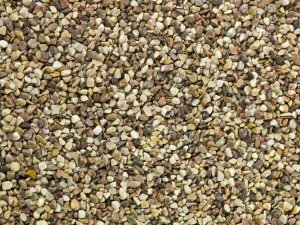Posted on 31st October 2017 by Hintons
For many construction projects, aggregates are used as an essential building material. Often used as a sub-base material, as well as a primary material for some paving and driveway constructions, it’s important to choose the right aggregate for your needs. Limestone and gravel are two of the most popular options, but what are the benefits of limestone? And what are the benefits of gravel? That’s what we’re looking at in this article.
Why use aggregates?
Probably the most popular use for aggregates is for the construction of footpaths and driveways. Both gravel and limestone are great alternatives to flat stone or slab paving, and they also have a few other benefits too. These include:
- Easier to install
- Allow groundwater to pass through – usually don’t require drainage channels
- Unique visual texture
- Cheaper than other paving options
With aggregates, you can easily install a highly functional driveway that adds interesting visual flair to your property. This can be done affordably and quickly, producing a satisfying finished product without any trouble.
Gravel

Gravel is a versatile material, and encompasses many different varieties. Stones are typically more rounded and much smoother than limestone, so often create a softer finish for driveways and paths.
Used as a common construction material for roadway surfacing, decorative paving and more, gravel is made up of a collection of different stone types. This often means that gravel mixes are available in a variety of colours, which makes it even more attractive for homeowners looking to improve the aesthetics of their property’s exterior.
In everyday application, gravel is perhaps a ‘looser’ choice than limestone. Gravel driveways, for example, will become displaced and scattered more easily than limestone driveways, and may need to be bonded if you want to keep a completely clean, unchanging display.
Limestone

The most obvious differences between gravel and limestone are those seen in size, shape and texture. Limestone aggregates are typically much more jagged, bulkier and sharper than gravel. There are also more differences between individual stones – less uniformity – than you’d find in decorative gravel mixes.
Despite the more rugged look and feel of limestone, it still provides a highly attractive finish. But why choose limestone over gravel? The main reason is durability and performance. For high traffic or heavy use areas, limestone is beneficial because it won’t be displaced as easily. It’s more hard wearing. That’s why it’s often used to pave industrial zones such as railway tracks.
In a domestic setting, larger driveways housing many cars – or heavier vehicles in general – limestone is often the optimal material. You have less leeway with sheer visual design, but the performance benefits are usually worth the compromise.
Whichever construction aggregates you choose, look no further than Hinton’s Waste for high quality aggregates in London and Croydon. We ensure swift delivery of your materials, and are on hand to advise on the benefits of gravel and the benefits of limestone for your particular project. For more information, contact us today.
